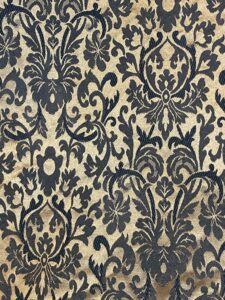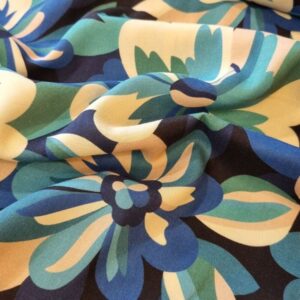Is Solid Tulle Suitable for Sweaters?
Fabric compatibility is crucial in fashion and sewing, influencing the final look, feel, and durability of garments. This article explores the compatibility of solid tulle and sweater fabrics, offering insights into their potential synergy. Readers will learn about the properties of these fabrics, benefits, challenges, and practical tips for combining them effectively.
Compatibility Analysis
YES, solid tulle can be suitable for sweaters, but it depends on the intended design and use. Here’s why these fabrics can work together:
- Texture: Tulle adds a delicate, airy texture that can complement the denser knit of a sweater, creating visual interest.
- Weight and Stretch: Tulle is lightweight and non-stretchy, while sweater knits are heavier and often stretchy. This contrast can be both a challenge and an opportunity for creative design.
- Care Requirements: Tulle typically requires gentle handling, while sweaters can vary from machine-washable to hand-wash only. Aligning care instructions is crucial.
- Durability: Tulle is less durable than sweater knits, so placement and usage should be considered to avoid wear and tear.
Fabric Properties Comparison Table
| Property | Solid Tulle | Sweater Fabric |
|---|---|---|
| Fiber Content | Synthetic (nylon, polyester) | Natural (wool, cotton) or blends |
| Weight and Thickness | Lightweight, sheer | Medium to heavy, dense |
| Breathability | High | Moderate to high |
| Stretch and Elasticity | Low | High (especially with elastane) |
| Wrinkle Resistance | High | Varies (wool resists, cotton does not) |
| Care Instructions | Hand wash, air dry | Machine wash or hand wash, varies |
| Durability | Low | High |
Benefits of Mixing These Fabrics
- Enhanced Texture and Visual Interest: Combining the airy texture of tulle with the solid structure of a sweater can create unique visual contrasts.
- Improved Comfort and Performance: Tulle overlays can add breathability and lightness to heavier sweaters.
- Better Drape and Movement: Tulle can enhance the drape of a sweater, adding fluidity and elegance.
- Cost-effectiveness: Tulle is generally inexpensive, allowing for affordable experimentation.
- Seasonal Versatility: Tulle can lighten a sweater for transitional seasons.
- Design Possibilities: The combination allows for innovative designs, such as layered sleeves or decorative panels.
Potential Challenges
- Different Shrinkage Rates: Tulle does not shrink, but sweater fabrics might. Pre-wash fabrics to minimize issues.
- Conflicting Care Requirements: Align care instructions to avoid damaging either fabric.
- Texture Clash or Pilling: Use interfacing to manage texture differences and prevent pilling.
- Seam Puckering: Use appropriate stitching techniques to prevent puckering.
- Color Bleeding or Fading: Test for colorfastness before combining.
Sewing & Styling Tips
- Sewing Techniques: Use a zigzag or stretch stitch to accommodate different fabric stretches.
- Needle and Thread: Use a fine needle (size 70/10) and polyester thread for tulle.
- Interfacing and Stabilizer: Consider lightweight interfacing to stabilize tulle.
- Seam Finishing: Use French seams or serging for a neat finish.
- Pattern Selection: Choose patterns that highlight the contrast between fabrics.
- Styling Ideas: Use tulle as overlays on sleeves or hemlines for a chic look.
Care & Maintenance Guide
- Washing Instructions: Hand wash in cold water with mild detergent.
- Drying Recommendations: Lay flat to dry to maintain shape.
- Ironing and Steaming Tips: Use a low-heat iron on the reverse side, if necessary.
- Stain Removal: Gently dab stains with a mild soap solution.
- Long-term Care: Store away from direct sunlight to prevent fading.
FAQ Section
-
Can you wash tulle and sweater fabric together?
- It’s best to wash separately to accommodate their different care needs.
-
Will tulle shrink more than sweater fabric?
- No, tulle does not typically shrink, unlike some sweater fabrics.
-
What needle size should I use for sewing these fabrics together?
- A fine needle, such as size 70/10, is recommended for tulle.
-
Can you mix tulle and sweater fabric in one garment?
- Yes, they can be creatively combined for unique designs.
-
How do you prevent seam puckering when combining these fabrics?
- Use a zigzag stitch and consider a walking foot for even feeding.
-
Is it okay to mix tulle and sweater fabric for upholstery?
- Not recommended due to tulle’s low durability.
-
What’s the best way to finish seams with these fabrics?
- French seams or serging provide a clean finish.
By understanding the compatibility and challenges of mixing solid tulle with sweater fabrics, you can create innovative and stylish garments that stand out. Whether in fashion or home decor, this fabric pairing offers exciting possibilities for creative expression.


Leave a Reply